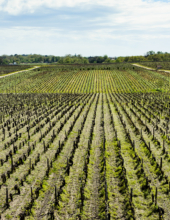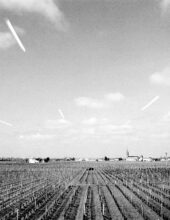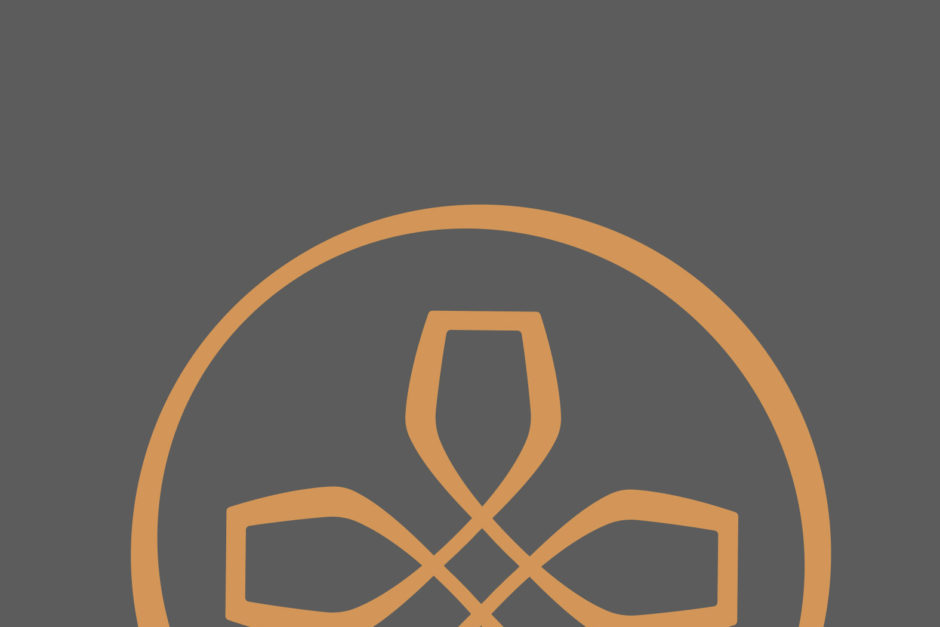12th Oct 2023
Packing a great sense of humor and no pretenses, Napa-based winemaking consultant Jean Hoefliger works for about 28 different brands, spread between Napa, Sonoma, Paso Robles, Texas, Italy, and Spain, and a little bit in Switzerland, mainly because it’s his native land.

Swiss Aerial
When it comes to winemaking, Napa Valley operates like Bordeaux in that there are usually two winemakers. A resident winemaker is dedicated to that producer and responsible for the day-to-day activities. And, often at the top end, there is also a consultant winemaker/enologist who works for many different wineries. Consultant winemakers are as engaged as the winery owner wants them to be. They might only be involved in the final blending process, or they can have an input in all major decisions from harvest to bottling. These guys are highly experienced experts who are paid big bucks because they see the big picture thanks to working many harvests in many wineries and usually in multiple regions/countries. One of Napa’s most famous consultant enologists is Bordeaux’s Michel Rolland, who works for Screaming Eagle, Harlan Estate, Dalla Valle, Bryant Family, Realm, etc. Rolland has worked with and mentored many of the top winemakers in Napa Valley today, some of whom have become consultant winemakers themselves. One of his most gifted protégés is Jean Hoefliger.
Packing a great sense of humor and no pretenses, Jean is one of my favorite consultant winemakers to taste with. Having cut his teeth in Bordeaux and South Africa working for famous names such as Château Lynch-Bages, Carbonnieux, and Meerlust, he spent five years as winemaker at Newton, before setting up Alpha Omega. He currently works for about 28 different brands, spread between Napa, Sonoma, Paso Robles, Texas, Italy, and Spain, and a little bit in Switzerland, mainly because it’s his native land.

"I got into wine out of failure."
“I got into wine out of failure,” he confesses. “I was raised in the French-speaking part of Switzerland. Every male in my family went to law school, so I decided to follow the same path. I ended up playing cards and drinking wine all day long. After two years of that, I decided to stop law school and go into wealth management because I was promised a six-digit salary after a short time. But no amount of money is worth being bored your entire life. After a year and a half in that field, the same theme came back: wine. I decided to start my career in the wine industry as a cellar rat in Epesses, Switzerland, working on Chasselas, Gamay, and Pinot Noir.”
Jean was introduced to Michel Rolland while working at Newton Winery in the early 2000s.
“The first time I met Michel Rolland will prove to you that I’m not a very smart guy, and I only have two brain cells running after each other,” Jean laughs. “I had recently started at Newton Vineyard in 2001, and Michel Rolland was consulting for them. The first time he came to blend (this was well before the movie Mondovino), I looked at him and asked, ‘Sir, don’t you think that you and Robert Parker are homogenizing the wine world?’" And Michel actually took the time to talk to me and explain why it was not the case. One thing that he told me, and I will never forget, is, ‘I do not have the power to erase terroir.’”
Jean then put Michel’s claim to the test. He conducted an extensive blind tasting with a group of sommeliers, winemakers, and avid collectors to see if these experienced tasters could pick out the wines made by Michel Rolland from around the world. They couldn’t.
“It proved to me that I was wrong, and it was a stupid question to have asked Michel Rolland,” says Jean. “But I guess he didn’t hate the question too much because 25 years later we are really close friends, and we work on a bunch of different projects together.”

In 2010, Hoefliger and Rolland embarked on a project to make a Napa Valley wine called, “Michel Rolland,” now better known as “MR.”
“The MR brand happened because one day Michel and I went to Morimoto for dinner, and I asked him if we could make a wine together. He laughed and said that we make plenty of wines together. Then I explained that I wanted to make a wine that represented us, so when the two of us retire, and we’re home, we can taste and remember one another as friends. So, we started MR together. And the directive that he gave me is truly none. Let me explain. What I always found as a value in Michel Rolland, who is clearly a mentor to me and to so many different winemakers, is that he is really honest and direct enough to criticize. I’ve worked with other people who have over and over said, ‘Oh, it’s great, oh it’s great.’ I don’t think we progress from praise; we progress from criticism. I know that with Michel, every time we produce a wine or fermentation or single vineyard for any brand, there will always come a time when there is a discussion of what we can do better. Well, that is why I value Michel’s input on wine—he will always push me to make a better wine.”
MR Cabernet Sauvignon is a blend of vineyards from around Napa Valley, which change every vintage.
“When we make MR, we first select the right sites, and then we make it in a way where it is in the context of a discussion of a great wine of the world. This approach self-dictates what you need to do, which is mainly adapt to and understand the vintage. We don’t apply recipes but a strategy unique to the year and what nature has given us. This is how MR is made and how I think great wines of the world should be made.”
This explanation is an excellent segue into a discussion of Jean’s unique approach to winemaking.
“First, I am not interested in making one-hit wonders,” says Jean. “And I am for sure not interested in making early-drinking wines, but the market dictates differently. So, I think that the biggest job of a winemaker today is to widen the spectrum of drinkability of a wine. I have worked really hard over the last 15 years on polymerization, which is when tannins, anthocyanins, polysaccharides, and other compounds bind together to create a molecular chain that is longer. This creates a softer mouthfeel, but it is also more chemically stable. This makes the wine earlier drinking, but at the same time more age-worthy. With the work that we’ve done, we’ve found ways to polymerize extremely well at a much greater rate than anyone else, according to the labs and the systems that we use, which is great; however, it is always a balance because you can always go too far. For example, in one of my trials, I used ultrasound to create holes in the grape skins to extract more anthocyanins and bump up polymerization, but by doing that, you end up having a wine that is black, and I mean pitch black. It is a technology used a lot in vegetables and fruits for tomato sauce and other things like that. So again, obviously, that would be too far, but after 15 years of trials, we’ve come to a polymerization rate that is great enough for what we want to achieve.”
"I am not interested in making one-hit wonders."

"Here lies the guy that made the world understand that Napa Valley wine can age as well, if not better, than Bordeaux."
I ask Jean to elaborate further on how he achieves polymerization.
“One of the vehicles that I use to do this is barrel fermentation,” he replies. “I believe that I was one of the first to do this in 2001 when we explored barrel fermentation as a way to polymerize compounds and integrate wood early. So, we popped the head off a 60-gallon barrel and tried doing an open-top barrel fermentation. Through the years, I have increased the number of barrels to do this on a much larger scale. Now, a lot of people are using this technique for many different reasons, and polymerization is one. Additionally, this integration of the oak at an earlier stage brings a more approachable wine without affecting the age-ability.”
As for the style of wines he makes, like Michel Rolland’s “style,” I find Jean’s difficult to pigeonhole. I ask what style he wants to achieve in the wines he’s making today?
“For the last three or four years, the next step in my evolution of winemaking is how to create wines that are dense and powerful and layered while keeping some aerial components, some lightness, and I think that is really where my goal is,” he tells me. “One of the greatest wines I’ve ever tasted is a Cheval Blanc 1947. This is clearly a Napa Valley-style vintage in Bordeaux with 14.9% alcohol and a pH of 3.9. I truly believe that Napa Valley can make these mythical wines, and that bringing the fresh and aerial nature to a wine adds another layer to this iconic style.”
Apart from the Napa wineries reviewed with this article, Jean Hoefliger is also a partner in AXR Winery, which will be featured in a separate, dedicated article due to be published on October 26th—our Halloween Issue. This winery has a long history and a great collection of new releases, but it also has a spooky side. Upon purchasing the property, Jean and his partners had to sign a spiritual entity clause acknowledging active spirits exist on the property. Be sure to check out this feature later this month for the story behind Jean’s partnership with AXR and a few accounts of paranormal activity.
Before I leave AXR Winery after tasting over a hundred wines that Jean makes throughout Napa Valley for more than a dozen clients, I ask (maybe because we are sitting in a haunted winery): What would you like to have written on your tombstone?
“Here lies the guy that made the world understand that Napa Valley wine can age as well, if not better, than Bordeaux.”
–
Article & Reviews by Lisa Perrotti-Brown MW
Photography by Svante Örnberg
See more work from Svante at svanteornberg.se by clicking here!
More articles

Bordeaux 2023 Vintage Report and Reviews from Barrel
09th May 2024
649 tasting notes

Cathiard Vineyard New Releases
02nd May 2024
3 tasting notes

Bordeaux 2023 Preliminary Vintage Report and Reviews from Barrel
29th Apr 2024
56 tasting notes

2021 Bordeaux in Bottle and A Modest Proposal
24th Apr 2024
599 tasting notes
Show all articles
